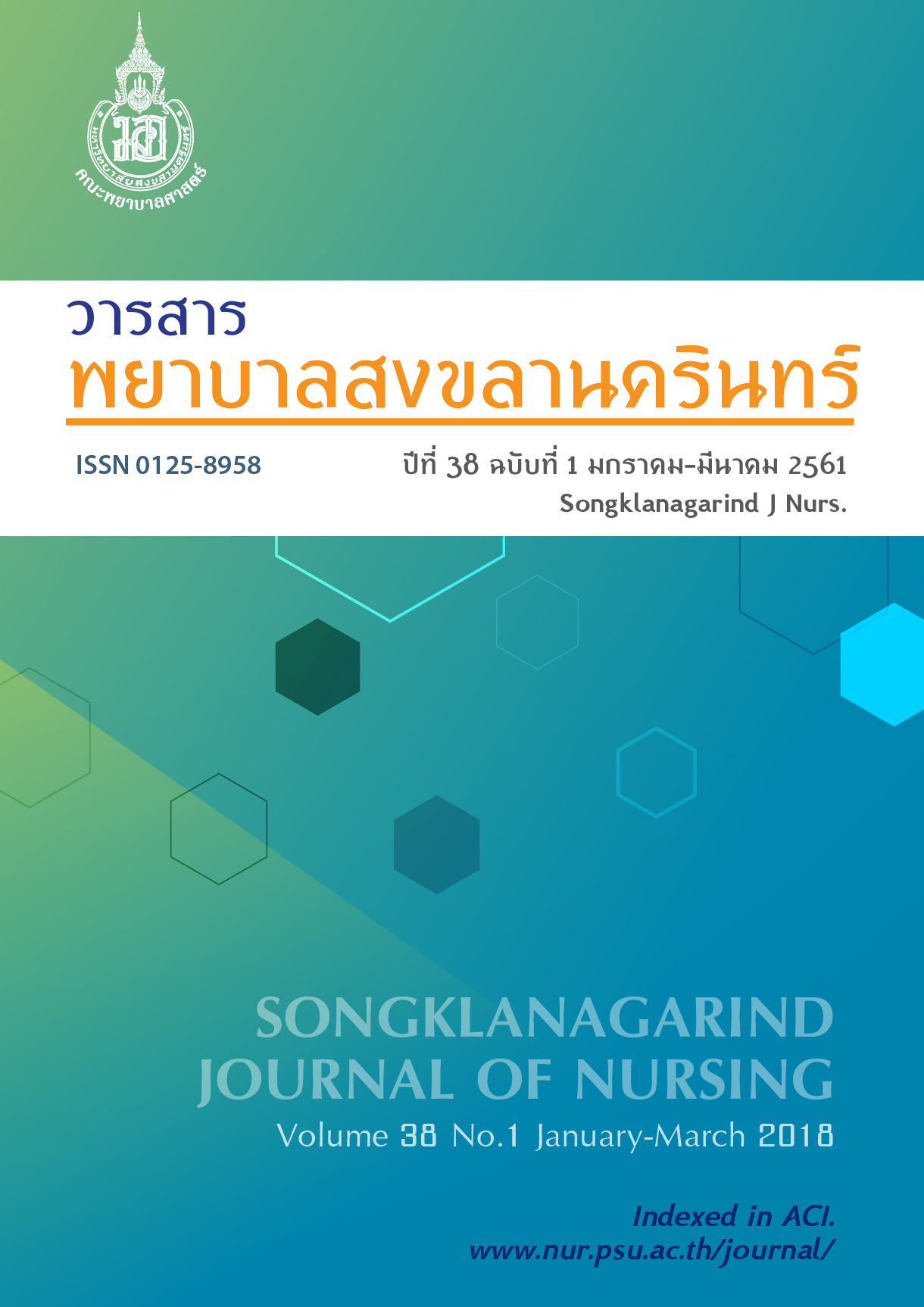Natural Childbirth: Care Guidelines
Main Article Content
Abstract
Natural childbirth is one of alternative birth methods that benefits to the woman giving birth, the baby born, the family, the economy and society. Natural childbirth promotes physical, mental, emotional, and social readiness, leading to satisfaction in childbirth, reduces anxiety, the use of analgesics, unnecessary medical intervention in the birth process, the use of obstetric procedures, and costs. The women giving birth and the family will be involved during the childbirth process. The nurse facilitates to ensure readiness of the woman’s body throughout the birthing process by following the six concepts, including 1) compassionate care, 2) psychological, emotional, and social care, 3) avoiding unnecessary routine medical activities, 4) avoiding interference in the natural childbirth process, 5) relieving pain without medications and 6) the complete use of natural birthing process.
Article Details
References
2. Lothian JA. Healthy birth practice #4: Avoid interventions unless they are medically necessary. J Perinat Educ. 2014; 23(4):198-206. doi: 10.1891/ 1058-1243.23.4.198
3. Wolinsky FD. Sick-Role Legitimation. In: Gochman DS, Editors. Health behavior: Emerging research perspectives. New York: Plenum Press; 1988. 181-92.
4. Balaskas J. New active birth: A concise guide to natural childbirth. London: Thorsons; 1991.
5. Romano AM, Lothian JA. Promoting, protecting, and supporting normal birth: A look at the evidence. J Obstet Gynecol Neonatal Nurs. 2008; 37(1): 94-105. doi: 10.1111/j.1552-6909.2007.00210.x.
6. Kovasisarach E, Hoapanon T. Natural birth. Academic papers natural birth based on sufficiency economy. Chon Buri: Faculty of Nursing Burapha University; 2009. Thai.
7. Hodnett ED, Gates S, Hofmeyr GJ, et al. Continuous support for women during childbirth. Cochrane Database Syst Rev. 2013; 7:5-22. doi: 10.1002/ 14651858.CD003766.pub5.
8. Kritcharoen S, Phon-in K, Pongpaiboon P. The effects of natural childbirth versus normal labor on perineal tear of primiparous women. Songkla Med J. 2012; 30(4):179-87. Thai.
9. Green J, Hotelling BA. Healthy birth practice #3: Bring a loved one, friend, or doula for continuous support. J Perinat Educ.2014; 23(4): 194-7. doi: 10.1891/1058-1243.23.4.194.
10. World Health Organization. Care in normal birth: A practical guide. Geneva: World Health Organization; 1996.
11. Klaitabtim B, Yusamran C, Sinsuksai N. Effects of an information support program on anxiety in advanced maternal-age women receiving amniocentesis. Journal of Nursing and Health Care 2016; 34(3): 81-7. Thai.
12. Basevi V, Lavender T. Routine perineal shaving on admission in labour. Cochrane Database Syst Rev. 2014; 11: 3-
11. doi: 10.1002/14651858. CD001236.pub2
13. Reveiz L, Gaitan HG, Cuervo LG. Enemas during labour. Cochrane Database Syst Rev. 2013; 7: 1-9. doi: 10.1002/14651858.CD000330.pub4
14. McCormick C. The first stage of labor: Physiology and early care. In: Fraser DM, Cooper MA, editors. Myles textbook for midwives. 16th ed. London: Bruce Hogarth; 2009.
15. Johanson R, Newburn M, Macfarlane A. Has the medication of childbirth gone too far?. BMJ. 2002; 324(7342) :892-5.
16. Lowdermilk DL, Perry SE, Cashion K, et al. Maternity and women’s health care. 11th ed. St. Louis: Elsevier Mosby; 2015.
17. Ricci SS, Kyle T. Maternity and pediatric nursing. 3rd ed. Philadephia: Lippincott; 2009.
18. Simson KR, James DC. The effects of immediate versus delayed pushing during the second stage of labor on fetal wellbeing: A randomized clinical trai. Nurs Res. 2005; 54(3): 149-57.
19. Vaziri F, Arzhe A, Asadi N, et al. Spontaneous pushing in lateral position versus valsalva maneuver during second stage of labor on maternal and fetal outcomes: A randomized clinical trial. Iran Red Crescent Med J. 2016; 18(10): 1-9. doi:10.5812/ircmj.29279
20. Lothian JA. Safe, healthy birth: What every pregnant woman needs to know. J Perinat Educ. 2009; 18(3):48-54.doi: 10.1624/105812409x461225
21. Ondeck M. Healthy birth practice #2: Walk, move around, and change positions throughout labor. J Perinat Educ. 2014; 23(4):188-93. doi: 10.1891/1058-1243.23.4.188.
22. Gupta JK, Hofmeyr GJ, Smyth R. Position in the second stage of labour for women without epidural anaesthesia. Cochrane Database Syst Rev. 2014; 4:3-10.
23. Kritcharoen S, Pongpaiboon P, Phon-in K, et al. Development of a clinical nursing practice guideline for clients with natural childbirth. Songkla Med J. 2015; 35(2):161-76. Thai.
24. Laura A. Zinsser, KathrinStoll, et al. Midwives’ attitudes towards supporting normal labour and birth-a cross-sectional study in South Germany. Midwifery. 2016; 39: 98-102. doi: 10.1016/j.midw. 2016.05.006
25. Carolan-Olah M, Kruger G, Garvey-Graham A. Midwives’ experiences of the factors that facilitate normal birth among low risk women at a public hospital in Australia. Midwifery. 2015; 31(1): 112-21. doi: 10.1016/j.midw.2014.07.003
26. Reed R, Rowe J, Barnes M. Midwifery practice during birth: Ritual companionship. Women Birth. 2016; 29(3): 269-78. doi: 10.1016/j.wombi.2015.12.003

